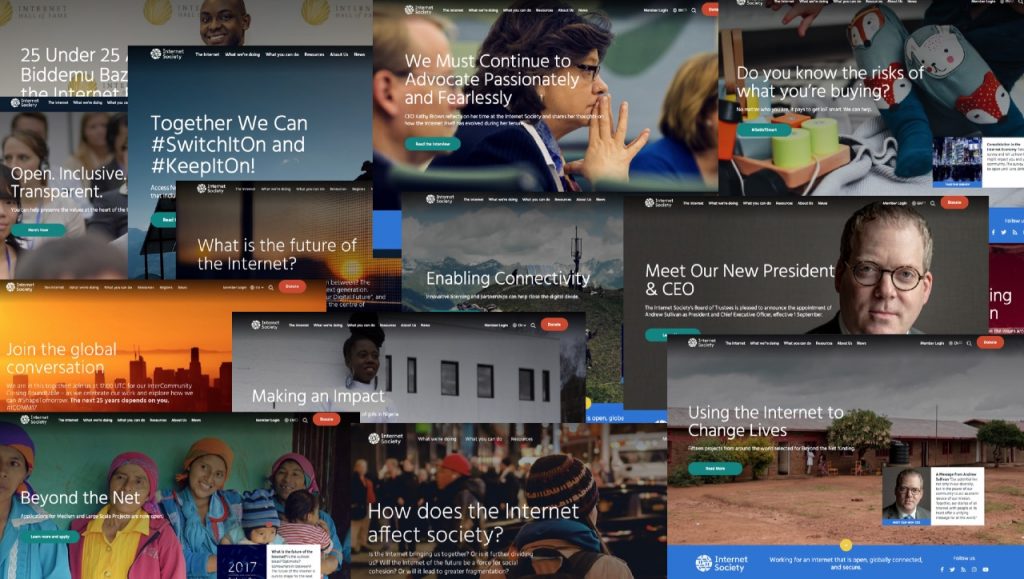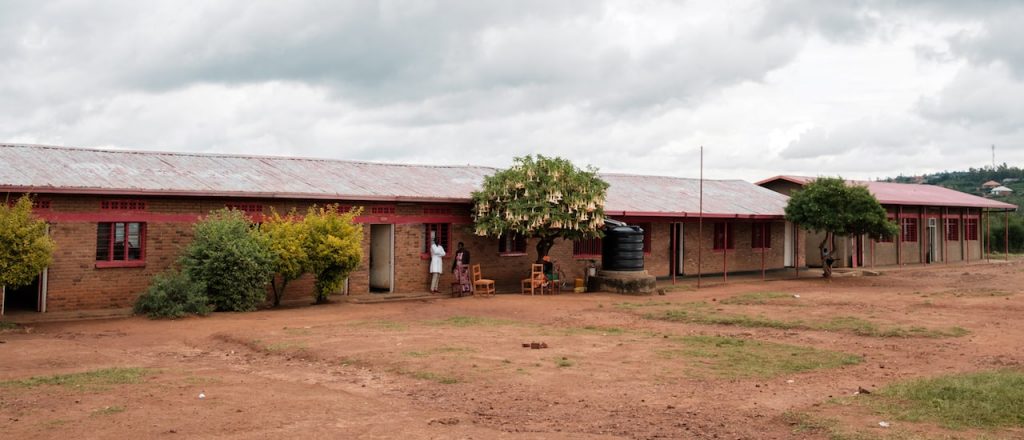Openswitch OPX 3.0.0 Installation On Ubuntu 18.04.1 LTS

I have covered installation of Openswitch OPX 2.3.2 on Linux Ubuntu 16.04 in a previous article. I will go further with this time and cover installation of Openswitch 3.0.0 on Ubuntu 18.04 (upgrade from 16.04). Firstly, it is worth to add that I haven't been successful with installation of any OPX version on Ubuntu 18.0.4.1. I have done several test with different Oracle VirtualBox versions (5.1, 5,2) but I have always got the error message VBoxManage: error: Code NS_ERROR_FACTORY_NOT_REGISTERED (0x80040154) - Class not registered (extended info not available). According to the words of developers installation of OPX 3.0.0 has been tested with Ubuntu 16.04 and Oracle VirtualBox 5.2.
1. Openswitch OPX 3.0.0 Installationon Ubuntu 18.04.1 Using Nested Virtualization
As I do not posses any spare hardware I decided to do a little workaround with the help of nested virtualization. Nested virtualization refers to virtualization that runs inside an already virtualized environment. In other words, it is the ability to run a hypervisor inside of a virtual machine (VM), which itself runs on a hypervisor. I installed Openswitch OPX 3.0.0 Continue reading
Valley-Free Routing in Data Center Fabrics
You might have noticed that almost every BGP as Data Center IGP design uses the same AS number on all spine switches (there are exceptions coming from people who use BGP as RIP with AS-path length serving as hop count… but let’s not go there).
There are two reasons for that design choice:
Read more ...EVPN behind the curtains
Is EVPN magic? Well, like Arthur C Clarke said, any considerable leap in technology is indistinguishable from magic. On that premise, moving from a traditional layer 2 environment to VXLAN driven by EVPN has much of that same hocus pocus feeling. To help demystify the sorcery, this blog aims to help users new to EVPN create some step-by-step understanding of how EVPN works and how the control plane converges. In this blog post, we’ll focus on basic layer 2 (L2) building blocks then work our way up to layer 3 (L3) connectivity and the control plane.
We’ll be using the “reference topology” as our cable plan and foundation to build our understanding of the traffic flow. Our infrastructure will try to demystify a symmetric mode EVPN environment using distributed gateways. All the configurations are defined in this github repo.
If you’d like to follow along as we go, feel free to launch your own CITC blank slate and deploy the above playbook:

EVPN message types
Like any good protocol, EVPN has a robust process for exchanging information with its peers. In EVPN this process uses message types. If you already know OSPF and the LSA messages you can Continue reading
JAMstack podcast episode: Listen to Cloudflare’s Kenton Varda speak about originless code

JAMstack Radio is a show all about the JAMstack, a new way to build fast & secure apps or websites. In the most recent episode, the host, Brian Douglas, met with Kenton Varda, tech lead for Cloudflare Workers and author of Sandstorm.io to discuss some of the infinite uses for running code at the edge.
Listen to what Kenton had to say about serverless technology in this twenty two minute podcast here:
Here's the transcript of the podcast as well:
Brian Douglas: Welcome to another installment of JAMstack Radio. In the room I've got Kenton Varda from Cloudflare.
Kenton Varda: Thanks for having me.
Brian: Thanks for coming all the way across San Francisco to chat with me in person. I'm curious who Kenton is, but I'm also curious what Cloudflare is. Can you answer both questions? Let's start with, "Who is Kenton?"
Kenton: I'm an engineer. I'm the architect of Cloudflare Workers. In a past life I worked for Google for several years. I was once known as the "protocol buffers guy," I was the one who open sourced that. And I founded a company called Sandstorm that was later acquired by Cloudflare.
Brian: I'm Continue reading
Base Go packages
The Go standard library is generally great, but some parts have replacements that are just plain better and remove frustrations that you may have not even realised were frustrations. Here are my recommendations for every Go program.
I wouldn’t recommend that anyone use the standard library version of these for any purpose, since better alternatives exist.
This list may expand in the future.
gorilla/mux
The standard router is fine, but very low level. Here’s some of the features that makes it vital.
Filter on HTTP method
With the standard router you have to manually check that the method is
what you expect it to be, and if the same endpoint has both GET and
POST then you have to route that yourself. With gorilla/mux it’s as simple as:
r := mux.NewRouter()
get := r.Method("GET").Subrouter()
post := r.Method("POST").Subrouter()
get.HandleFunc("/", handleRoot)
get.HandleFunc("/items", handleListItems)
post.HandleFunc("/items", handleUploadItem)
You can also assert that headers are in place, for example to check
X-Requested-With because some API endpoints should not be allowed in
cross-domain XHR requests. Adding it to the router instead of manual
checks simplifies code and reduces risk of forgetting to add the
check.
Pattern URLs
With Continue reading
Celebrating One Year With Our New Website

It is hard for me to believe, but it was one year ago today that we launched this new website! On September 14, 2017, James Wood began our flow of news with a welcoming blog post – and just a few days later the site was heavily used as part of our massive 25th Anniversary celebration. It was the culmination of a rather insane several months in which a whole crew of people within the Internet Society, as well as at our partners Moving Brands and ATTCK, all burned countless hours to make this site a reality.
One year later, we’ve published over 500 news articles and blog posts; published over 120 new resources and tutorials; promoted many events, and maintained a consistent flow of content on the critical issues affecting the Internet.
We’ve built campaign pages, integrated video and graphics (ex. our GIR page), showcased the amazing work our Chapters are doing, integrated social components (ex. our IoT page and Instagram), and pushed the limits of how many links any sane person should have on a page. I continue to be impressed by the beauty of pages like our Issues page (just move Continue reading
We’ve Added Another Google Cloud Course To Our Video Library!
Tune into Joseph Holbrook’s Associate GCP Cloud Engineer Course to learn about the requirements of the GCP Cloud Engineer Associate Exam.
About the Course:
An Associate Cloud Engineer deploys applications, monitors operations, and manages enterprise solutions. This individual is able to use Google Cloud Console and the command-line interface to perform common platform-based tasks to maintain one or more deployed solutions that leverage Google-managed or self-managed services on Google Cloud. The GCP Cloud Engineer Associate is one of Google’s newest certifications, this course will walk you through everything you need to know to ace your certification exam.
Prerequisites:
- Basic knowledge of cloud technologies
- Basic Knowledge of GCP Cloud
- A will to learn GCP Cloud
- Access to a free trial account with GCP
- Ability to use Codelabs and Quiklabs
Wireless Execs High on 5G Distributed Network Architecture
 Virtualization is the key to making new 5G use cases a reality, according to top tech chiefs at U.S. wireless operators.
Virtualization is the key to making new 5G use cases a reality, according to top tech chiefs at U.S. wireless operators.
AWS vs. Azure: Users Share Their Experiences
Enterprise IT professionals offer their insights into two of the leading cloud platforms, AWS and Azure.
Cloud Storage Startup Wasabi Scores $68M, Brings the Heat to Amazon
 The company claims its cloud storage costs less than one-fifth the price of Amazon S3 and is more than six times as fast.
The company claims its cloud storage costs less than one-fifth the price of Amazon S3 and is more than six times as fast.
Weekly Show 407: Delivering Applications In Multi-Cloud Environments With Avi Networks (Sponsored)
Running applications in a multi-cloud environment presents serious networking challenges. On today's sponsored Weekly Show, we talk with Avi Networks about how its software-based ADC and load balancer can help customers working in multi-cloud environments ensure application delivery, provide security, and enable automation at scale.
The post Weekly Show 407: Delivering Applications In Multi-Cloud Environments With Avi Networks (Sponsored) appeared first on Packet Pushers.
SDxCentral’s Weekly Roundup — September 14, 2018
 Microsoft introduces Azure DevOps; OpenDaylight releases Fluorine ; and Sprint and Nokia collaborate on 5G.
Microsoft introduces Azure DevOps; OpenDaylight releases Fluorine ; and Sprint and Nokia collaborate on 5G.
Weekend Reads 091418
Security
You install a new app on your phone, and it asks for access to your email accounts. Should you, or shouldn’t you? TL;DR? You shouldn’t. When an app asks for access to your email, they are probably reading your email, performing analytics across it, and selling that information. Something to think about: how do they train their analytics models? By giving humans the job of reading it.
When you shut your computer down, the contents of memory are not wiped. This means an attacker can sometimes grab your data while the computer is booting, before any password is entered. Since 2008, computers have included a subsystem that wipes system memory before starting any O/S launch—but researchers have found a way around this memory wipe.
You know when your annoying friend talks about the dangers of IoT when you bragging about your latest install of that great new electronic doorlock that works off your phone? You know the one I’m talking about. Maybe that annoying friend has some things right, and we should really be paying more attention to the problems inherent in large scale IoT deployments. For instance, what would happen if you could get the electrical grid in Continue reading
From Idea to Action: Beyond the Net Selects 15 Amazing Chapter Projects!

The Beyond the Net Funding Programme is pleased to announce the results of our 2018 Grant Cycle. A total of 49 applications were received, and after a thorough reviewing process, 15 amazing projects were selected.
These projects are at the core of our mission, and will use the Internet to develop Community Networks in underserved areas, to empower women through ICT, as well as bringing awareness on Internet policies around the world.
This is the result of months of effort from our Chapter Community. Many discussions, numerous clarifications and proposals, updates, and revisions form the Beyond the Net Selection Committee. We are proud of you all.
Please join us in celebrating the following projects!
Developing community networks in the Northern region of Brazil – Brazil Chapter
Supporting and promoting the development of the Internet to enrich people’s lives, the project aim is to contribute to the growth and improvement of community networks policies and practices in Brazilian rural areas, in order to strengthen those who are marginalized. Instituto Nupef will work to develop a new network in the state of Maranhão as well as a developing a communications plan for the Babassu coconut breakers organizations and movements. Objectives include Continue reading
Short Take – Time Management
In this Network Collective Short Take, Russ White shares how he uses his time effectively to be productive in ways that matter.
The post Short Take – Time Management appeared first on Network Collective.





